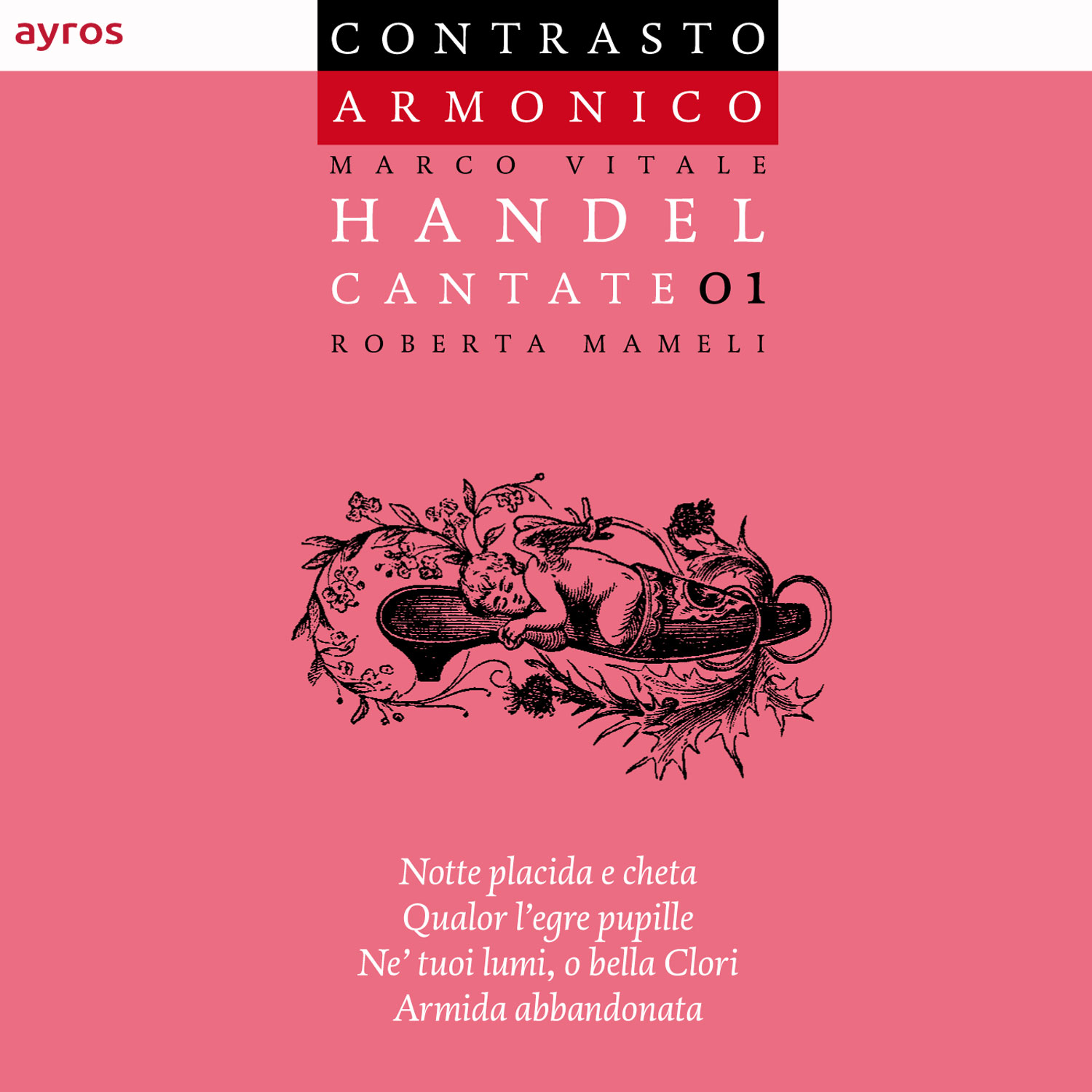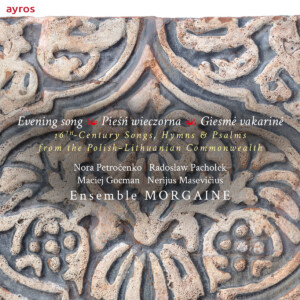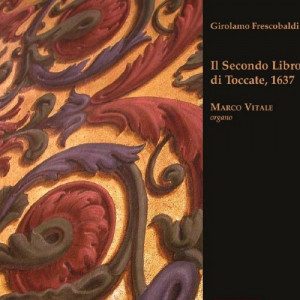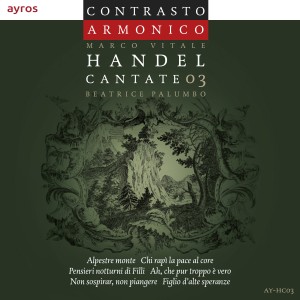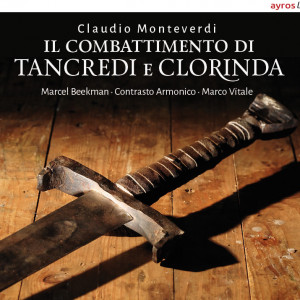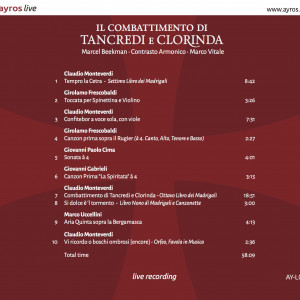HANDEL CANTATE 01
Roberta Mameli – Contrasto Armonico, Marco Vitale
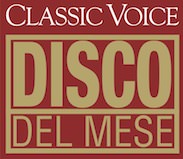 |
    |
|---|
Additional information
| Weight | 100 g |
|---|---|
| Dimensions | 120 × 120 × 5 mm |
| Catalogue Nr. | |
| EAN | |
| Composer | |
| Soloist(s) | |
| Director | |
| Ensemble | |
| Featured Artists | Stefan Plewniak (violin), Enrique Gómez-Cabrero Fernández (violin), Marta Semkiw (cello) |
| Booklet essay | |
| Design | |
| Recorded | Slomczyn (Poland), April 2012 |
| Cantatas | Armida abbandonata (Dietro l’orme fugaci) HWV 105, Ne’ tuoi lumi, o bella Clori HWV 133, Notte placida e cheta HWV 142, Qualor l’egre pupille HWV 152 |
| Format |
EAN: 5902768283006 - Need Help? Contact Us Leave Feedback
Categories: Contrasto Armonico, Handel Cantatas, Marco Vitale, Roberta Mameli
Brand: Contrasto Armonico, Marco Vitale, Roberta Mameli
Contact Us
Leave Feedback
Release sheet
Handel Complete Cantatas Project
Handel’s cantatas represent an important musical repertoire that until recently has been little known. Consisting of about 100 separate works, most were written over a period of a few years for private performance in Italy.
They range from musical miniatures containing only two arias connected by recitative and accompanied by continuo (a bass line typically realized by cello and harpsichord) to larger works with named characters, a dramatic story, and rich instrumental forces. Telling more often than not about the pangs of love, these are intimate works, with texts frequently written by (and sometimes about) members of the privileged audience for which they were composed. A number of Handel’s cantatas have texts by one of his important Italian patrons, Cardinal Benedetto Pamphilj.
The project of Marco Vitale to record all of Handel’s cantatas is thrilling. The continuo cantatas have never been recorded in full and many have never been recorded at all. Thus, this project will bring to life largely unknown music by one of the world’s greatest composers. Further, performance all the cantatas will place the larger, instrumental works in the musical context of their creation.
This project is the continuation of the ‘Handel Complete Cantatas’ series appeared recently on the market with four volumes issued. This is the first volume presented by the ayros recording label, as continuation of the series . This CD features the great soprano Roberta Mameli, an acclaimed specialist of the Handel repertoire and it includes the wonderful cantatas “Notte placida e cheta” and “Armida abbandonata”.
Tracklist
| TITLE | TIME |
| Notte placida e cheta HWV 142 / Recitativo: Notte placida e cheta | 1:02 |
| Notte placida e cheta HWV 142 / Aria: Zeffiretti, deh venite | 7:14 |
| Notte placida e cheta HWV 142 / Recitativo: Momento fortunato | 0:38 |
| Notte placida e cheta HWV 142 / Aria: Per un istante | 2:17 |
| Notte placida e cheta HWV 142 / Accompagnato: Ma già sento che spande | 1:15 |
| Notte placida e cheta HWV 142 / Aria: Luci belle, vaghe stelle | 3:26 |
| Notte placida e cheta HWV 142 / Accompagnato: Oh delizie d’Amor | 0:42 |
| Notte placida e cheta HWV 142 / Aria: Che non si dà qua giù | 1:59 |
| Qualor l’egre pupille HWV 152 / Recitativo: Qualor l’egre pupille | 1:11 |
| Qualor l’egre pupille HWV 152 / Aria: E’ il pensier nella mia mente | 3:51 |
| Qualor l’egre pupille HWV 152 / Recitativo: Lungi del caro oggetto | 0:37 |
| Qualor l’egre pupille HWV 152 / Aria: S’altri gode pensando al suo bene | 2:34 |
| Qualor l’egre pupille HWV 152 / Recitativo: Chi chiama amor tiranno | 0:43 |
| Ne’ tuoi lumi, o bella Clori HWV 133 / Aria: Ne’ tuoi lumi, o bella Clori | 7:01 |
| Ne’ tuoi lumi, o bella Clori HWV 133 / Recitativo: Credi che quanto dolci | 1:06 |
| Ne’ tuoi lumi, o bella Clori HWV 133 / Aria: Superbetti occhi amorosi | 4:43 |
| Ne’ tuoi lumi, o bella Clori HWV 133 / Recitativo: Sul pallido mio volto | 0:51 |
| Ne’ tuoi lumi, o bella Clori HWV 133 / Aria: La mia piaga, se v’appaga | 2:59 |
| Dietro l’orme fugaci (Armida abbandonata) HWV 105 / Accompagnato: Dietro l’orme fugaci | 1:17 |
| Dietro l’orme fugaci (Armida abbandonata) HWV 105 / Aria: Ah! crudele | 5:45 |
| Dietro l’orme fugaci (Armida abbandonata) HWV 105 / Recitativo: Per te mi struggo, infido | 0:30 |
| Dietro l’orme fugaci (Armida abbandonata) HWV 105 / Accompagnato: O voi, dell’incostante | 0:59 |
| Dietro l’orme fugaci (Armida abbandonata) HWV 105 / Aria: Venti, fermate, si | 2:46 |
| Dietro l’orme fugaci (Armida abbandonata) HWV 105 / Recitativo: Ma che parlo, che dico? | 1:12 |
| Dietro l’orme fugaci (Armida abbandonata) HWV 105 / Aria: In tanti affanni miei | 4:37 |
| ——– | |
| TOTAL | 61:19 |
Classic Voice
UN’IDEA DI STILE CHE COINCIDE CON L’ELEGANZA E LA QUADRATURA PIU’ CHE CON L’ESTROVERSIONE E I MANIERISMI DECORATIVI - Classic Voice, CD of the MONTH
 Il lancio di una nuova etichetta discografica autoprodotta e di una nuova impresa sulle cantate di Handel si associano alla riconferma di un giovane ensemble (Contrasto Armonico) già precedentemente segnalato per un esordio particolarmente felice. In programma le cantate “Notte placida e cheta” Hwv 142, “Qualor l’egre pupille” Hwv 152, “Ne’ tuoi lumi, o bella Clori” Hwv 133, “Armida abbandonata” HWV 105 (la prima e l’ultima relativamente presenti in repertorio, le due centrali assai più rare), per le quali la voce di Roberta Mameli si mostra appropriata tecnicamente ed espressivamente, caratterizzata da un controllo dell’emissione e dell’intonazione abbastanza rari nel panorama delle esecuzioni handeliane, funestate da troppe forzature e da cantanti che vi si rifugiano senza capirne le impervie difficoltà. L’impronta generale impressa da Marco Vitale (al cembalo) e dai suoi musicisti (al violino Stefan Plewniak ed Enrique Gómez-Cabrero Fernández, al violoncello Marta Semkiw) è intesa alla trasparenza e alla discrezione, secondo un’idea del tardo barocco che – se non altro relativamente a Handel, sua punta più avanzata – non dista poi tanto dal Classicismo; secondo un’idea di stile che coincide con l’eleganza e la quadratura più che con l’estroversione e i manierismi decorativi. In attesa di ascoltare il prosieguo di questa impresa e nuove prove con altri autori che ci sembrano poter essere particolarmente appropriati a questo ensemble: per esempio Monteverdi, per esempio Mozart.
Il lancio di una nuova etichetta discografica autoprodotta e di una nuova impresa sulle cantate di Handel si associano alla riconferma di un giovane ensemble (Contrasto Armonico) già precedentemente segnalato per un esordio particolarmente felice. In programma le cantate “Notte placida e cheta” Hwv 142, “Qualor l’egre pupille” Hwv 152, “Ne’ tuoi lumi, o bella Clori” Hwv 133, “Armida abbandonata” HWV 105 (la prima e l’ultima relativamente presenti in repertorio, le due centrali assai più rare), per le quali la voce di Roberta Mameli si mostra appropriata tecnicamente ed espressivamente, caratterizzata da un controllo dell’emissione e dell’intonazione abbastanza rari nel panorama delle esecuzioni handeliane, funestate da troppe forzature e da cantanti che vi si rifugiano senza capirne le impervie difficoltà. L’impronta generale impressa da Marco Vitale (al cembalo) e dai suoi musicisti (al violino Stefan Plewniak ed Enrique Gómez-Cabrero Fernández, al violoncello Marta Semkiw) è intesa alla trasparenza e alla discrezione, secondo un’idea del tardo barocco che – se non altro relativamente a Handel, sua punta più avanzata – non dista poi tanto dal Classicismo; secondo un’idea di stile che coincide con l’eleganza e la quadratura più che con l’estroversione e i manierismi decorativi. In attesa di ascoltare il prosieguo di questa impresa e nuove prove con altri autori che ci sembrano poter essere particolarmente appropriati a questo ensemble: per esempio Monteverdi, per esempio Mozart.
CARLO FIORE, Classic Voice, July/August 2013
New beginning for Vitale’s cantata series on his own label
Contrasto Armonico recorded four volumes of an aborted complete Handel cantata series for Brilliant Classics but here Marco Vitale launches his own label, Ayros, with a clean slate, while continuing to explore the reasonably well-known cantate con stromenti alongside the obscure smaller-scale solo cantatas accompanied by only basso continuo – many of which have never been recorded before.
The dramatic Armida abbandonata needs little introduction to ardent Handelians but this anthology contains premiere recordings of continuo cantatas Qualor l’egre pupille and Ne’ tuoi lumi, o bella Clori that were also written in 1707 for Durastanti to sing at Sunday afternoon conversazioni hosted by Handel’s Roman patron the Marchese Ruspoli. The odd one out is Notte placida e cheta, the exact origin of which is unknown: Roberta Mameli subtly conjures the atmosphere of placid night in the opening recitative, and ‘Zeffiretti, deh! venite’ is a blissfully shaded dialogue between her
exquisite murmurs and violinists Stefan Plewniak and Enrique Gómez-Cabrero Fernádez. Mameli’s soft singing seductively conveys a lover’s infatuation with Clori’s beautiful eyes in Ne’ tuoi lumi, o bella Clori; Vitale and cellist Marta Semkiw provide discreet yet eloquent continuo; and Ellen Harris’s essay rightly lauds it ‘one of those extraordinary masterpieces that one can hardly believe has lain dormant for so long’.
This inauguration climaxes with an unforced Armida abbandonata: the violin interjections in ‘Venti, fermate’ lack the extrovert theatricality some listeners might expect but Mameli’s conversational story-telling is maximised by Contrasto Armonico’s correct use of low Roman pitch, and Vitale’s unobtrusive direction places the limelight on the singer’s declamation of poetry.
David Vickers, Gramophone Magazine
Marco Vitale: HANDEL Cantatas on AYROS
During the four years he spent in Italy, George Frederic Handel was a busy boy. Of course, he went there to create a reputation as a composer of opera, but he also spent a considerable amount of energy on the secular cantata. In fact, he wrote over 100 of them, usually scored for voice and a few instruments, mainly strings. These miniature opera scenes usually consist of a pair of arias preceded by recitatives, but they could be expanded as needed to serve the dramatic needs of the scenes musically depicted. The works found on this disc are certainly of that nature, although the first, Notte placida e cheta , is almost double that length, with the second set of pairs using accompanied recitative. If the Pope had banned stage productions, then these were dangerously close to insubordination in their secular operatic nature, even if they were meant to be performed before private patrons.
The first of the cantatas is a languid dream work, in which a shepherd dreams of his beloved Phyllis. The first aria, “Zeffiretti,” is just the sort of imagery that would inspire Handel to compose a gentle, softly flowing line with only the most fluid ornamentation. The violins softly weave like gentle leaves on a stream. In the second part, the strings form an ethereal backdrop, preparing for the recurring sequences of the continuo aria that follows. The final aria is a rather intricate fugue, quite Corelli-like, but perhaps more strict than one might imagine for a secular cantata. I can’t help but think that the composer was barely skirting insolence with this sort of parody in the center of Catholicism. In the second cantata, scored only for voice and continuo, the aria “È il pensier” moves fluidly through various keys, unable to find harmonic rest until the last note, like a ship being tossed around. More unusual, the work ends with a recitative that is more reflective and leaves the listener anticipating an aria that never comes (Handel, apparently realizing that this was unsatisfactory, crossed it out.) The opening aria of the third cantata is a lament, with restless dotted rhythms in the continuo part but a more lyrical, even at times plaintive melodic line. The final aria, “La mia piaga,” is extremely familiar, since Handel apparently reused it two or three times in operas in varied forms. It contains some rather impressive virtuoso passages, replete with close harmonic inflections (mostly to words like “torture” and “pain”) and some rather interesting ornamentation. The final work, however, has a real plot. The sorceress Armide has been abandoned, and the swirling opening accompagnato has her reflecting on her fate, with the lines twisting and turning before finally completely calming into fading chords. This sets up the gorgeous, emotional “Ah! Crudele,” probably the progenitor of all of the famous lamento arias of heroines such as Cleopatra. The final two arias are in dance tempos: the first is a gigue with rapid continuo and string punctuations, while the last, “In tanti affanni miei,” is a mournful Siciliano , with a slow and sorrowful line that moves with slow triple rhythms like a gentle wave.
This is highly effective musical material, made all the more so by the excellent performance of soprano Roberta Mameli. Her voice has depth and resonance, and she is extremely skillful in reproducing the necessary emotions by way of her phrasing and cautious use of ornamentation. It is intimate, blends well with the subtle chamber instrumentation, and filled with expression. This is probably the way that Handel ought to be sung, and she captures the pictorial essence of these small works excellently. It would not have worked, of course, without close cooperation with a similarly sensitive interpretation by Marco Vitale and his ensemble. When required, the continuo (including cellist Marta Semkiw) acts as an equal partner, but they are discreet so as not to overshadow Handel’s exposed vocal lines. The violins are also firm and discrete partners in their two cantatas. In short, this is a disc that plumbs the depths of Handel’s ability to convey emotional texts in a manner that makes it an indispensable part of any early Baroque collection. Bertil van Boer
La Sala del Cembalo del Caro Sassone - Maurizio Frigeni
Malgrado ci siano diverse ottime incisioni delle cantate di Handel con strumenti, molte di quelle accompagnate dal solo basso continuo non sono mai state registrate finora. Eppure si tratta quasi sempre di composizioni tutt’altro che trascurabili, alle quali spesso lo stesso Handel attinse negli anni seguenti, durante la composizione delle sue opere. Ho accolto quindi con entusiasmo la notizia della prosecuzione dell’integrale delle cantate italiane di Handel, già intrapresa da Marco Vitale con Brilliant (vedi la recensione dell’ultimo volume pubblicato) ed ora continuata con la sua etichetta Ayros, dopo che un silenzio di oltre un anno mi faceva ormai temere che il progetto si fosse arenato.
Questo CD raccoglie quattro cantate risalenti al soggiorno di Handel presso il Principe Ruspoli a Roma e composte tutte probabilmente nel 1707. Ben tre di esse (e forse anche la quarta) furono scritte per il soprano Margherita Durastante (o Durastanti), una delle cantanti che più a lungo lavorò con Handel: dopo la loro collaborazione a Roma, Handel creò per lei il ruolo di Agrippina a Venezia nel 1709 e la chiamò in seguito per la prima Royal Academy (1720-1724) a Londra, dove scrisse per lei ad esempio i ruoli di Radamisto (nell’opera omonima) e di Sesto (nel Giulio Cesare). Poi dopo una parentesi di quasi 10 anni la Durastante ritornò a cantare per Handel negli anni 1733-1734 e impersonò fra gli altri Haliate, in una ripresa del Sosarme, e Tauride alla prima dell’Arianna in Creta.
Due delle cantate sono per soprano e basso continuo e costituiscono un buon esempio di quanto scrivevo sopra, infatti non mi risulta che siano mai prima approdate al disco. In particolare la cantata Ne’ tuoi lumi, o bella Clori è “uno di quegli straordinari capolavori che si fa fatica a credere siano rimasti ignorati così a lungo”, come scrive Ellen T. Harris nel saggio allegato al CD. In effetti già l’aria iniziale è notevole: il languido lamento dell’amante, stregato dagli occhi dell’amata, è accompagnato da un andamento quasi ostinato del basso, come se questo volesse prendere le distanze dal cantante. Nella seconda aria tale impressione si accentua, perché l’accompagnamento (che opportunamente Vitale affida al solo cembalo) diventa un mulinello di note, come a voler tormentare ancor di più l’innamorato respinto.
Anche la cantata Qualor l’egre pupille è estremamente interessante. La prima aria paragona il pensiero dell’amante ad una nave nel mare agitato, rappresentato quest’ultimo dalle figurazioni del violoncello. La seconda aria verrà riutilizzata in quello stesso anno da Handel per comporre il celeberrimo quartetto Se non sei più ministro di pene, che conclude la prima parte dell’oratorio Il trionfo del tempo e del disinganno. Per apprezzare in pieno questi lavori bisogna comunque rifarsi al tipo di pubblico estremamente sofisticato e colto (nonché numericamente esiguo) al quale erano destinati, così come al tipo di convenzione letteraria (la poesia arcadica) a cui facevano riferimento. Handel non compone in modo molto appariscente ma ricerca piuttosto l’aderenza al testo attraverso procedimenti musicali tutt’altro che immediati.
Le altre due cantate presenti nel CD sono invece molto più famose ed eseguite. In esse l’accompagnamento comprende anche una coppia di violini, e con l’organico strumentale aumenta pure la carica emotiva dei testi. Notte placida e cheta è la riflessione di un amante, che acquista sul finire risvolti mistici, culminando con la celebre fuga sulle parole Che non si dà qua giù pace gradita / se non altro che un sogno è la sua vita. Ma soprattutto la cantata Dietro l’orme fugaci è una vera e propria scena d’opera in miniatura, che rappresenta la maga Armida impotente di fronte alla fuga dell’amato Rinaldo.
Anche se di queste due cantate esistono diverse altre ottime incisioni, la versione che ce ne viene offerta qui è notevole per la cura del dettaglio che continua a caratterizzare l’approccio di Marco Vitale. A cominciare dal diapason basso che si usava a Roma all’epoca (la = 392 Hz) e dalla decisione di usare un solo violino per parte e di non utilizzare il violone, scelte che sono tese a restituirci quello che era il clima sonoro delle esecuzioni che lo stesso Handel dirigeva per il principe Ruspoli presso il suo palazzo, ma che non sono affatto scontate. Di fatto, la maggior parte delle altre registrazioni di queste cantate presenti sul mercato prevede un organico strumentale molto più nutrito, sicuramente adatto ad un moderno teatro ma non molto sensato dal punto di vista storico.
Se questa coerenza filologica già caratterizzava i precedenti volumi della serie, la vera novità di questo nuovo CD è la presenza di Roberta Mameli, una cantante che si è fatta già molto apprezzare nel repertorio barocco e che, dopo essersi dedicata soprattutto al Seicento, ora interpreta sempre più spesso lavori di Handel e Vivaldi: negli ultimi mesi ha cantato come Poppea nell’Agrippina e come Melissa nell’Amadigi, mentre durante la prossima estate sarà Atalanta nel Serse, Euridice nell’Orfeo di Gluck e Alinda nell’Incoronazione di Dario. E l’ascolto non fa che confermare quanto la sua popolarità sia meritata: eccellente dizione, bei trilli, ottimo controllo del vibrato e soprattutto grande padronanza dello stile dell’epoca.
È forse anche grazie alla sua presenza che in questo CD un approccio troppo rigido nell’esecuzione del recitativo, che a volte si notava nei primi quattro volumi della serie, ha lasciato il posto ad una maggiore libertà espressiva. E mi è sembrato anche di notare un aumento nella varietà e nell’entità degli abbellimenti, anche questi comunque caratterizzati, rispetto ad altre proposte discografiche, dalla grande attenzione a quella che era la prassi esecutiva dell’epoca, evitando quindi soluzioni volte solo a solleticare le orecchie dell’ascoltatore ma storicamente improbabili.
L’unico appunto che si potrebbe muovere è che alcune volte la tessitura dei brani risulta un po’ troppo grave per la voce di Roberta Mameli: la Durastante non ebbe mai un registro acuto molto sviluppato e la sua estensione vocale era probabilmente più vicina a quella di un odierno mezzosoprano. Ma si tratta di poca cosa di fronte ad un’esecuzione stilisticamente ineccepibile e che ci regala grandi emozioni.
Un CD quindi altamente raccomandato: mi auguro anzi di poter salutare presto l’uscita del prossimo album della collana.
Maurizio Frigeni, 5 maggio 2013
Roberta Mameli. Una Cantata profana per voce cristallina
La forma della “Cantata” barocca, profana o sacra, è senza dubbio una delle più riuscite sintesi dell’estetica espressiva del periodo, unendo al suo interno alcune delle modalità compositive più importanti ed efficaci, siano esse solo strumentali, vocali-strumentali, corali, o per voce sola, accompagnata o in recitativi “secchi”, cioè solo con il cembalo. Nell’affascinante CD oggi preso in considerazione la forma prescelta è quella della Cantata profana. La giovane etichetta indipendente Ayros propone un CD händeliano nel quale l’ensemble “Contrasto Armonico” (Stefan Plewniak, Enrique Gomez-Cabrero Fernàndez, violini, Marta Semkiw, cello e Marco Vitale, clavicembalo e direzione) accompagna la splendida voce di Roberta Mameli, soprano, in quattro arie, primo passo di un ambizioso progetto di registrazione integrale.
Gli appassionati del melodramma barocco e del repertorio vocale già conoscono la bravura di Roberta Mameli, protagonista planetaria di importanti rappresentazioni con i più famosi ensemble. Anche in quest’occasione l’ascolto della sua voce e della sua interpretazione è puro godimento dei sensi ed ammirata constatazione della bellezza e duttilità del suo timbro.
Un’occhiata al numero d’opera delle Cantate registrate fa capire che appartengono al periodo “italiano”,romano in particolare, di Händel, che proprio con il suo “italienische Reise” affinò lo stile assimilando alcune caratteristiche della scuola italiana. Le sue esibizioni al cospetto dei vari cardinali Pamphilj, Ottoboni, Colonnama anche del marchese Ruspoli entusiasmarono i romani, e l’ascolto di questa Cantata ci fa capire perché il pubblico rimanesse estasiato ascoltando le sue composizioni.
La Cantata profana dal punto di vista formale in fondo è semplice: una successione di recitativi ed arie che possano rappresentare gli “affetti” desunti dal testo utilizzato. La grandezza del compositore emerge ovviamente dal modo in cui utilizza il linguaggio a disposizione ed Händel raggiunge in questi casi vette insuperate.
L’ascolto della prima cantata presente nel CD materializza questa abilità: dopo un rarefatto recitativo iniziale, l’aria “Zeffiretti, deh venite” è una dichiarazione di dolcezza e languida tenerezza splendidamente interpretata dalla Mameli, che cattura subito l’attenzione dell’ascoltatore conducendolo per mano in mondo fatato e sognante.
Emerge da subito con questa cantata sia l’ottima presa di suono, nella quale è data la giusta presenza alla voce ed un ideale supporto timbrico del violino e del continuo, sia l’abilità degli esecutori nel sostenere ed evidenziare levariazioni espressive e gli “affetti” della voce umana.
Le tracce successive sono un susseguirsi di momenti di raffinata interpretazione, nei quali anche i recitativi, che troppo spesso rischiano di essere sviliti della loro funzione espressiva e declassati a cerniere fra un’aria ed un’altra, mantengono la freschezza la capacità di esprimere momenti di alta poesia (“…discaccia dalla mente la memoria dolente del mio perduto ben, del volto vago, che se lungi è dall’orecchio nel core e nel pensier sempre ho l’imago…”).
Fra le Cantate scelte è presente anche la celebre “Armida abbandonata”, che contiene una delle arie più famose (e belle) di Händel: “Ah crudele!”. Anche in questo caso Roberta Mameli ed il Contrasto Armonicoraggiungono momenti di eccellenza per ispirazione ed interpretazione.
L’ascolto di CD come questo genera anche un altro tipo di riflessione. Ascoltando l’approccio che ha la Mameli con la musica, si percepisce un atteggiamento che non si limita al meccanico aspetto esecutivo e di risoluzione dei problemi tecnici che la scrittura presenta. Come accade quando il musicista supera la soglia del semplice mestiere e diventa “artista”, nell’accezione più nobile e profonda del termine, colui cioè che mette a disposizione di chi ascolta la propria sensibilità e capacità di dare corpo alle emozioni: in quel caso si vive quell’incantesimo che una voce come quella della Mameli può provocare: entrare in sintonia con un universo nel quale le proporzioni e le simmetriediventano nutrimento dell’anima.
Un CD sicuramente da possedere, in attesa di altri che non potranno che confermare il fascino della voce di Roberta Mameli.
Piero Barbareschi
MusicWeb International
In 2009 Marco Vitale was to record all the Italian chamber cantatas by Handel. These were released by Brilliant Classics; four discs have appeared, the last in 2011. For reasons unknown to me the project was discontinued. It has taken a while but a new recording has now been released, this time on Vitale’s own label Ayros. It is numbered “01″, and that suggests that Vitale has started over again. Does that mean that the previously recorded cantatas will be released in new performances? Time will tell.
This is certainly a major project, and one can only hope that Vitale will be able to bring it to fruition. After all, Handel’s output in the genre of the chamber cantata is huge: more than 100 cantatas were written during his stay in Italy, and after his arrival in England he continued to compose such works. Only a relatively small proportion of them is well-known today. It can hardly surprise that the present disc includes two cantatas which, according to Ellen T. Harris in her liner-notes, have not been recorded before.
These two, Qualor l’egre pupille and Ne’ tuoi lumi, o bella Clori, were composed for the soprano Margherita Durastante, who played a significant role in Handel’s career. She appeared in several of his operas, first in Agrippina (Venice, 1709) and for the last time in Arianna (London, 1734). She apparently was a versatile artist: the two cantatas with basso continuo belong to the pastoral genre, whereas Armida abbandonata, also written for her, is a pocket-size opera.
In Qualor l’egre pupille an unhappy lover laments the loss of his beloved. In the first aria the protagonist makes use of the then popular image of a ship, “tossing in the middle of the sea”. The cantata comprises two recitative-aria pairs, and closes with a recitative. That was quite unusual and in a later version the closing recitative was omitted. Here we hear the first version. The second aria includes chromatic passages.
Ne’ tuoi lumi, o bella Clori begins with an aria which is followed by two recitative-aria pairs. It brings us into the idyllic world of Arcadia, inhabited by shepherds and shepherdesses, such as Aminta, Clori and Fileno. The lover praises the beauty of Clori’s eyes, and the fact that she has given him the cold shoulder doesn’t cool his ardour. He is even ready to suffer torment if that brings pleasure to her.
The most happy cantata is Notte placida e cheta which opens the programme. It may also have been written for Durastante. It is again about love in the Arcadian world, with the lover dreaming about Phyllis. This is scored for soprano, two violins and bc and comprises four recitative-aria pairs; the last two recitatives are accompanied. The strings play an important role in the depiction of the text; for instance in illustrating the “pleasant murmuring breezes” in the first aria. The dreamy atmosphere is brutally disrupted in the last recitative: “[What] intruder disrupts my sleep and steals all the pleasure from me?” The last aria then sums up the harsh reality: “[The] peace we long for in this world cannot be found if our life is no more than a dream”.
This turnaround is not fully explored here. Roberta Mameli and the ensemble could have taken this in a more dramatic way. That also goes for the last cantata of the programme, Dietro l’orme fugace, better known as Armida abbandonata. It has the character of an operatic scena and opens with an accompanied recitative for soprano and strings, without basso continuo. It sets the scene for what is going to happen. In fact it could have been performed with more intensity, and the strings could have made more of the arpeggiated figures. They fall silent at the last line: “[Weeping] and sighing, she [Armida] spoke thus”; this moment is not dramatic enough. However, there is no lack of expression in the following aria: “Ah! cruel one, you depart, abandoning me to my grief”. The accompagnato ‘O voi dell’incostante’ is the most dramatic episode in this cantata, and that is well realised here. Only the closing exclamation, “Ah! no, cease!” should have been given more weight. I don’t quite understand why Mameli sings this piano. The ensuing aria ‘Venti, fermate’ (Cease, o winds) is beautifully sung and played, and the Armida’s state of mind is eloquently exposed. The cantata ends with a nice aria in siciliano rhythm.
Despite my slight reservations in regard to the dramatic aspects, I have greatly enjoyed this disc. I don’t know all the previous recordings on Brilliant Classics but those I have heard I mostly liked. The qualities of those recordings are continued here. The recitatives are taken with the rhythmic flexibility expected from performers, and Roberta Mameli’s diction is outstanding. The performers also pay attention to the ornamentation; Mameli adds plenty of it, but never in an excessive way and always stylish and tasteful. She seems at her best in the more introverted pieces. She has a beautiful voice; I only regret the slight tremolo which sometimes creeps in, especially at the end of phrases. The tempi are generally modest, and so is the dynamic shading. That lends these performances a great deal of intimacy, but also leads to a slight underexposure of the dramatic aspects. That comes especially to the fore in Armida abbandonata.
That said, there is every reason to welcome this disc and to look forward to the following volumes in this project. No lover of Handel’s music should miss it.
Johan van Veen

